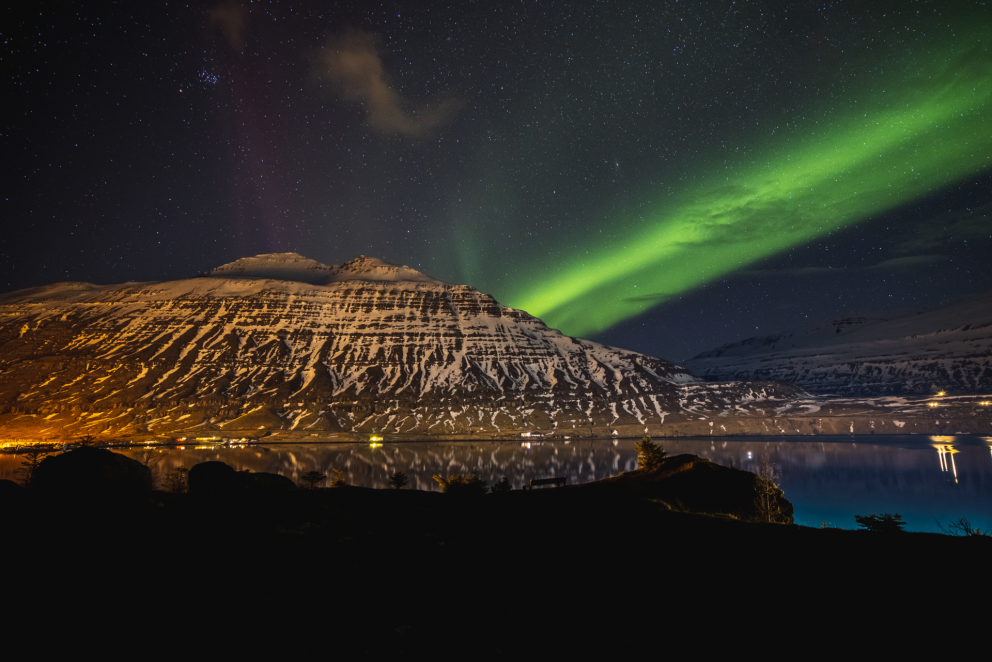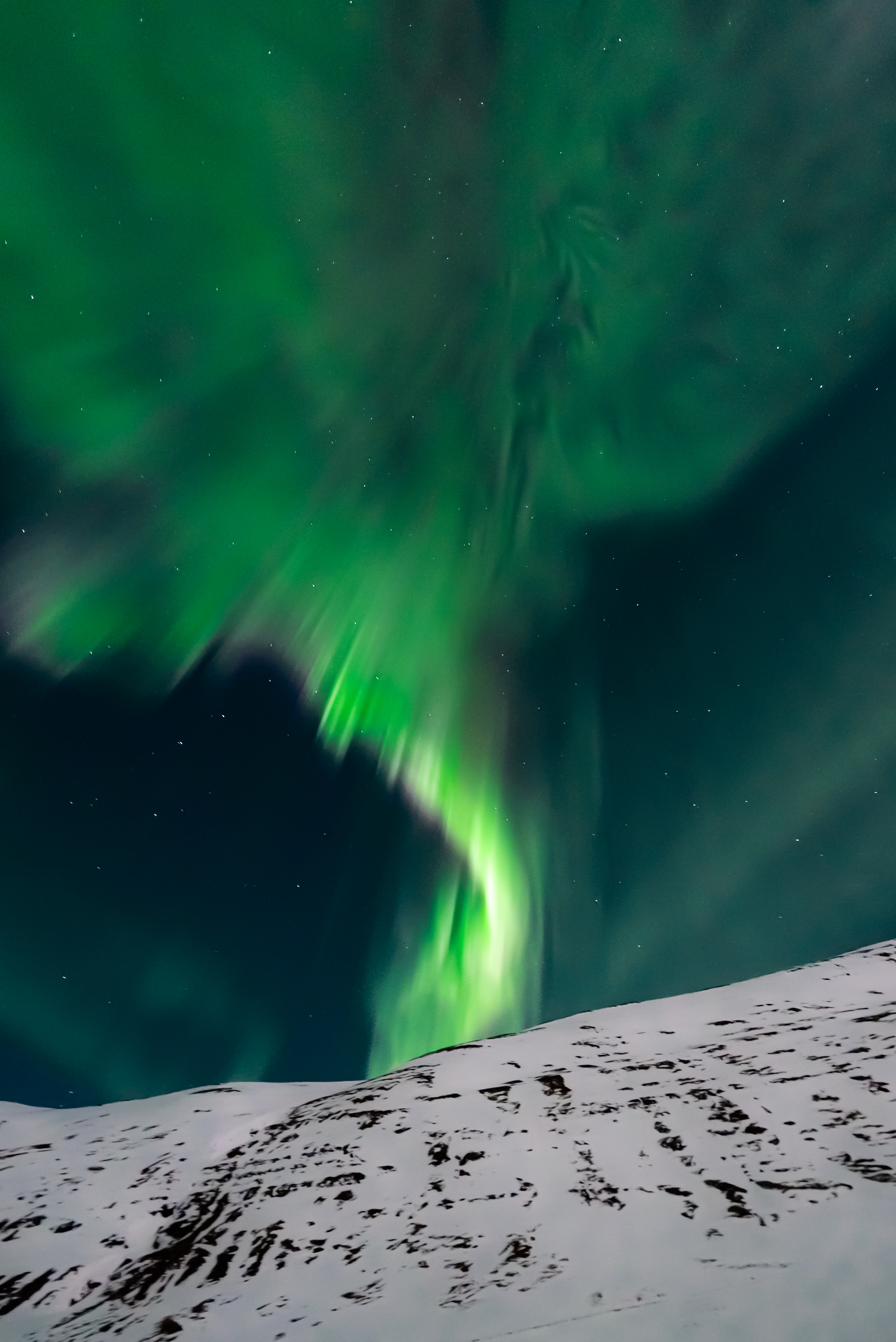Best Time to See the Northern Lights in East Iceland
Month-by-Month Northern Lights Guide
August
The chances of seeing the aurora borealis in East Iceland increase as the month of August progresses. This is because the amount of daylight decreases steadily as you approach the end of the month. It’s the tail end of the summer, so the weather is typically fine with a reasonable chance of clear skies.
September
This is one of the best months to view the Northern Lights. Statistically there is more solar activity around the autumnal equinox and weather conditions are often stable. By the latter part of the month, you can expect the sun to set about 6.30pm, meaning you can get started on your Northern Lights hunt earlier in the evening.
October
October too is a promising option for Northern Lights hunters. The weather is still autumnal – a mix of clear days and cloudy days – but the nights are drawing in. Keep a close eye on the weather and solar activity forecasts and there may be opportunities to view the Northern Lights in East Iceland.

November to February
By the end of November, it feels like winter is approaching. The temperatures are falling and the days are getting shorter and shorter. By midwinter, there’ll be just four or five hours of daylight and a good chance of blizzards and other wintry weather. Throughout the winter months, when the skies clear it can feel bitterly cold, especially if the wind is from the north, yet with all this darkness you have lots of time to view the aurora should it make an appearance.
March
Like September, this is a month when the equinox falls and this part of spring is also statistically a good bet. Plenty of solar activity has been recorded around the middle to end of the month in the past and though the weather can still be wintry it is generally more settled. Together with September, this would be our pick for the best time to attempt a Northern Lights hunt.
April
Because the evenings are getting lighter, April is really your last chance to see the Northern Lights at this kind of latitude. The weather can be mild by this point in the year, though of course with Iceland’s mid-Atlantic position snow’s also possible. Nevertheless, if you’re happy to stay up late and the skies are cloud-free, aurora spotting is still a distinct possibility.
May to July
If you’re in Iceland during this part of the year it will quickly become apparent why you have no chance of seeing the Northern Lights. What you do get instead is an endless succession of long days where it stays light late into the night. In midsummer, twilight is as dark as it gets, as you experience what it’s like in a latitude where you don’t have to travel much further north to encounter the Midnight Sun and the Arctic Circle.
One thing is important, however, and that’s the unpredictability of the aurora borealis. The Northern Lights never show up to a guaranteed timetable and you may not always be successful in your quest to see them. The good news is that there are plenty of other amazing things to do in Austurland so you won’t go home disappointed.


